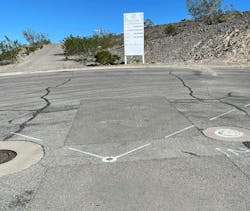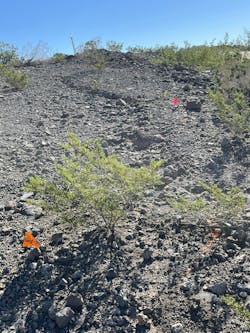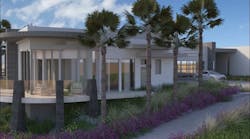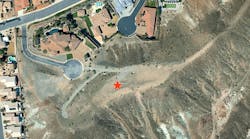Building Momentum: Preconstruction Planning Pays Off on the Carolla Home
Building Momentum: Preconstruction Planning Pays Off on the Carolla Home
Every custom home project has its turning points, and for the Carolla Build Idea Home in the hills overlooking Las Vegas, one of the most important of those happened before the first turn of a shovel: an on-site preconstruction meeting among local utility providers.
Builder Carl Martinez of Primaris Custom Homes gathered representatives from NV Energy, Southwest Gas, Cox Communications, and other utilities serving the project to ensure that logistics, access, and utility layouts were aligned prior to any excavation work on the building site.
For Martinez, early communication and coordination with all parties was essential.
“There are a million people involved in a project like this,” he says. “It’s hard to get everyone in the same place at the same time at once. But when you do, it pays off.”
During the meeting, the Primaris team and the utility partners walked the site together, talked through issues, and identified potential challenges.
For instance, Martinez recognized early on that trenching the road for gas, electric, and telecom could cut off construction access to the site, creating delays.
“To keep progress on track, we’re planning an alternate access road into the upper lot,” Martinez explains. “We will call 811 (the nationwide ‘Call Before You Dig’ number to schedule local utilities to mark the locations of existing underground utility lines before excavation), as always, to have any underground utilities located and will have the equipment onsite and ready. That way, when trenching happens, it doesn’t shut the job down.”
Another key milestone was addressing notes from the city’s permitting process that required the home’s driveway to widen from 12 feet to 20 feet, with 24-foot turning radii to allow for fire department access.
For Martinez, permitting is an opportunity to maintain his local reputation as a builder who delivers on time and on budget. “Permitting isn’t a hurdle,” say Martinez, “it’s a chance to create momentum.”
Benefits Beyond Planning
The benefits of this approach extend beyond the construction team. Prior to the organized site visit with local utilities, Martinez reached out to the neighbor directly south of the Carolla property, whose empty lot offered valuable staging space during early sitework. Rather than simply asking permission, he invited the neighbor to join the utility coordination meeting.
“It turned out he’s planning to build soon himself,” Martinez recalls. “By including him, he got to see firsthand how we work. After the meeting, he told me he wants us to be his builder.”
For Martinez, that kind of goodwill is as important as any logistical gain. Coordinating with neighbors reduces friction, builds trust, and in this case may even generate a new client.
“These projects are about more than just the house,” he says. “They’re about relationships and reputation.”
The Value of Preconstruction Agreements
Doing this much work before the building contract is signed might seem risky, but Martinez usually operates under a preconstruction services agreement that compensates him for the planning phase and prep work — an approach he believes more builders should adopt.
“Without a preconstruction agreement, you can’t justify this level of upfront work,” he says. “But with it, you can put in the time to solve problems early. That’s why we’re able to build so quickly while keeping quality high. The faster the job moves, the happier the client.”
With utilities coordinated, city protocols addressed, and support from a neighbor in place, the Carolla Build Idea Home is set to break ground with fewer obstacles in its path.
For Martinez, the process underscores his overall building philosophy that speed and quality don’t come from cutting corners, but from planning ahead.
“Preconstruction meetings, smart permitting, involving everyone early add up,” he says. “That’s how you take a complex custom project and keep it on schedule. It’s the right way to build.”
Read More:
About the Author
Andrew Hunt
Andrew Hunt writes about building science and the built environment.











